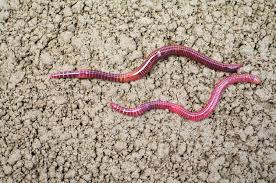Tiger Worms
What Are Tiger Worms?
Have you ever wondered how to turn kitchen scraps into rich, nutrient-filled compost? Meet Tiger Worms (Eisenia fetida), the little champions of vermiculture. These worms are renowned for their ability to break down organic waste efficiently, creating what gardeners call “black gold.” If you’re interested in composting or sustainable living, Tiger Worms are your perfect partners.
Understanding Tiger Worms
Scientific Name and Origins
Scientifically known as Eisenia fetida, earned their name from their striped appearance, resembling a tiger’s coat. These worms are native to temperate climates and thrive in decomposing organic material, making them a top choice for composting enthusiasts.
Physical Appearance
Tiger Worms are small, reddish-brown creatures with yellowish stripes. They grow to about 2-3 inches in length and are easy to spot among your compost pile due to their distinctive coloration.
Unique Behaviour
Unlike burrowing worms, Tiger Worms are epigeic species, meaning they live in the top layers of organic material. They’re surface feeders that work tirelessly to process waste into nutrient-rich compost.
The Role of Tiger Worms in Vermicomposting
Why They’re Called Composting Worms
They excel at breaking down organic waste quickly and efficiently. Their digestive systems transform food scraps into high-quality compost, packed with nutrients and beneficial microbes.
Contribution to Soil Health
The castings (worm poop) produced by Tiger Worms are a powerhouse for improving soil health. These castings enhance soil structure, promote plant growth, and boost microbial activity.
Nutrient Recycling Powerhouse
These worms play a critical role in recycling nutrients. They convert waste that would otherwise end up in landfills into valuable compost, making them eco-friendly and essential for sustainable gardening.

Creating the Perfect Habitat
Ideal Living Conditions
They thrive in dark, damp environments with plenty of organic material. A well-prepared worm bin filled with bedding like shredded paper or coconut coir is ideal for them.
Temperature and Moisture Requirements
Maintaining the right conditions is key. Keep the habitat’s temperature between 55°F and 77°F and ensure the bedding stays as moist as a wrung-out sponge.
Feeding Preferences
These worms love fruit and vegetable scraps, coffee grounds, and crushed eggshells. However, avoid citrus, meat, and oily foods to maintain a healthy bin.
Breeding and Lifecycle
Maturity and Reproduction Rates
This particular species of worm reaches maturity in 6-8 weeks. Once mature, they reproduce rapidly, laying cocoons weekly. Each cocoon typically produces 1-4 baby worms.
Cocoon Development
The cocoons hatch in about three weeks, and the tiny worms start working right away. Their rapid reproduction makes them ideal for expanding your worm bin.
Tips for Using Tiger Worms in Vermiculture
Building the Perfect Worm Bin
A successful worm bin starts with proper aeration, bedding, and a balance of food and moisture. Ensure your bin is well-ventilated and regularly monitored for optimal worm health.
Troubleshooting Common Issues
Bad odours in your bin? Overfeeding is often to blame. Reduce the amount of food, and add dry materials like shredded cardboard to balance moisture levels. Keeping pests at bay is another key to success.
Optimising Vermicomposting
Turn the compost occasionally to aerate it and help the worms access fresh material. Monitor conditions regularly to ensure your worms stay productive and healthy.
Soil Enhancement
Even if you’re not composting, releasing Tiger Worms into your garden soil (with plenty of organic material / mulch to feed on) can significantly boost its fertility and structure.
Controlling Odours and Moisture
To avoid unpleasant smells, monitor the bin’s moisture levels and ensure proper aeration. Adding dry bedding can often resolve excess moisture problems.
Tiger Worms and Sustainability
Reducing Organic Waste
By turning kitchen scraps into compost, Tiger Worms help reduce the amount of waste sent to landfills, significantly cutting your carbon footprint.
Promoting Eco-Friendly Practices
Incorporating Tiger Worms into your composting routine contributes to a circular economy, where waste becomes a valuable resource.
Conclusion
Tiger Worms are the unsung heroes of composting. They’re efficient, eco-friendly, and incredibly easy to care for. Whether you’re a seasoned gardener or a beginner looking to reduce waste, these worms are a must-have for any composting setup. Their ability to turn organic material into nutrient-rich compost is unmatched, making them an invaluable asset for sustainable living.
FAQs
What are the best foods for Tiger Worms? Stick to fruits, vegetable scraps, coffee grounds, and eggshells. Avoid citrus, meat, and oily foods.
How do I know if my worm bin is thriving? A healthy bin will have active worms, a pleasant earthy smell, and no signs of pests or excessive moisture.
Can Tiger Worms survive outdoors? Yes, they can, but they thrive best in a controlled worm bin environment where conditions are consistent.
Do Tiger Worms need special care compared to other worms? Not particularly! Just maintain the right temperature, moisture, and feeding routine, and they’ll flourish.





Comments are closed.